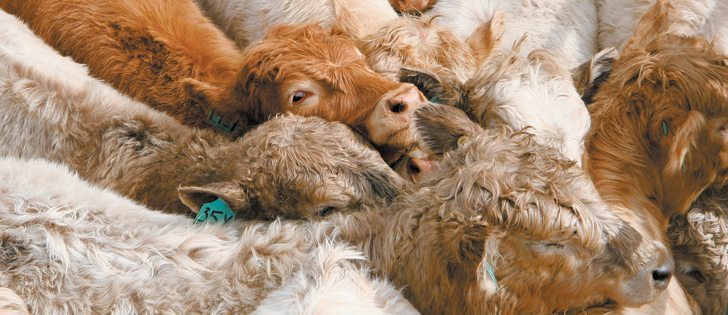LINDELL BEACH, B.C. — Scientists at the University of Wisconsin-Madison have developed an antibiotic-free method for protecting livestock using the animals’ own regulatory system.
Animal sciences professor Mark Cook has focused on a fundamental immune “off-switch” called Interleukin 10, or IL-10.
This switch, which is located in the gut, can turn the immune system off to prevent the problems of an overactive immune system.
However, bacteria, single and multi-celled parasites, protozoa and certain viruses have learned how to manipulate the switch so that it is off while they invade the host.
Read Also

Rural officials hopeful strychnine use will resume
The Saskatchewan Association of Rural Municipalities is taking a verbal commitment from the federal agriculture minister on strychnine use as a good sign.
This ability to activate IL-10 and shut down the immune system arose deep in the bacteria’s evolutionary past. Animal science associate researcher Jordan Sand said it is akin to wholesale piracy of the immune system.
The scientists discovered that a large group of pathogens make a chemical called macrophage migratory inhibition factor (MIF), which activates the IL-10 mechanism and shuts down the host’s immune system.
However, rather than targeting the bugs themselves, which have proven their remarkable ability to adapt, Cook said they worked on a method to de-activate the switch.
“We turn the (immune) system back on by not allowing IL-10 to turn the switch off,” he said.
The scientists vaccinated laying hens to create antibodies to IL-10. This antibody was contained inside the eggs that the hens subsequently laid.
The egg product was then sprayed on the feed of animals to be protected. The antibody neutralized the IL-10 off-switch in those animals, allowing their immune systems to better fight diseases.
“All we have done is to make some of the immunoglobulins (in the egg) specific for IL-10,” said Cook.
“The liquid or dry egg can be added directly to feed or if pelleted at a high temperature, added post pelleting. People have manipulated the immune system for decades, but we are doing it in the gut. Nobody has done that before.”
Approximately 600,000 chickens have been tested with the antibody material, and initial results have shown that they were fully protected against coccidiosis, which is a diarrhea caused by parasites.
Other tests with beef steers were also encouraging. After feeding them with the antibody for 14 days, bovine respiratory disease was halved. Larger trials are planned.
Similar results were found when testing newborn dairy calves after they were fed the antibody for 10 days.
The treated calves also showed less shedding of the protozoa that causes diarrhea.
“These diseases cause long-term reproduction, production and growth impairments in livestock,” said Sheila McGuirk, professor of medical sciences at the university’s School of Veterinary Medicine.
“To have something affordable, safe and non-antibiotic that controls these very important diseases is absolutely awesome. We are eager to study this further.”
Trials are already underway.
“We have commercial chickens testing or using the product at different levels/scale,” said Cook.
“We have tested 150 calves. This is new territory, and so far in this micro-environment we are seeing no side effects.”
Research will benefit producers because significantly more people working in conventional chicken farms carry multidrug-resistant pathogens than those who work in antibiotic-free farms.
One of four patents filed through the Wisconsin Alumni Research Foundation has been granted, and the foundation also awarded a $100,000 Accelerator Program grant to the inventors to pursue the antibiotic-replacement technology.
Cook and Sand have formed a company, called Ab E, to expand the broiler product.
“I think it will enter the market from several angles,” Cook said.
“Poultry is now there. The cattle product (is coming) any time.”
He said his new product probably isn’t the last word on resistant bacteria. “They will always evolve a way to defeat your drugs,” he said.
“Will the bugs find new ways to increase IL-10 and turn the switch off? Probably, but it may be a very long time from now. So far there has been no evidence they have other tricks.”















